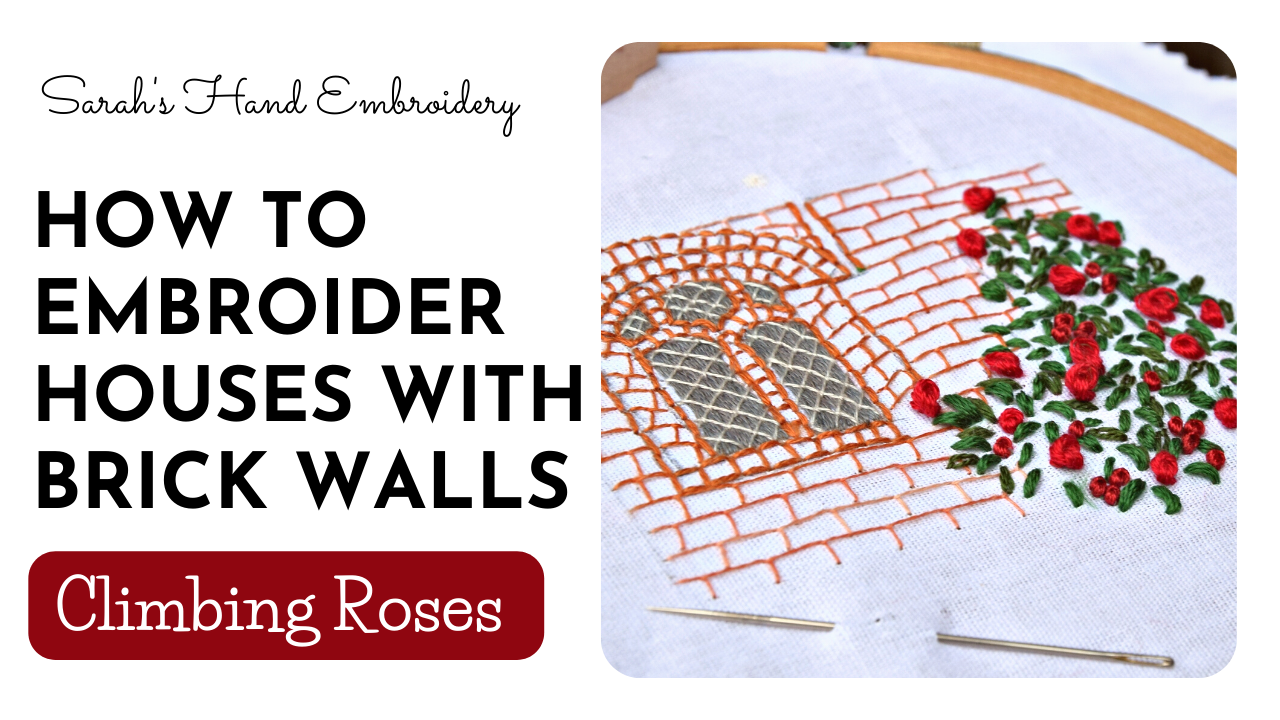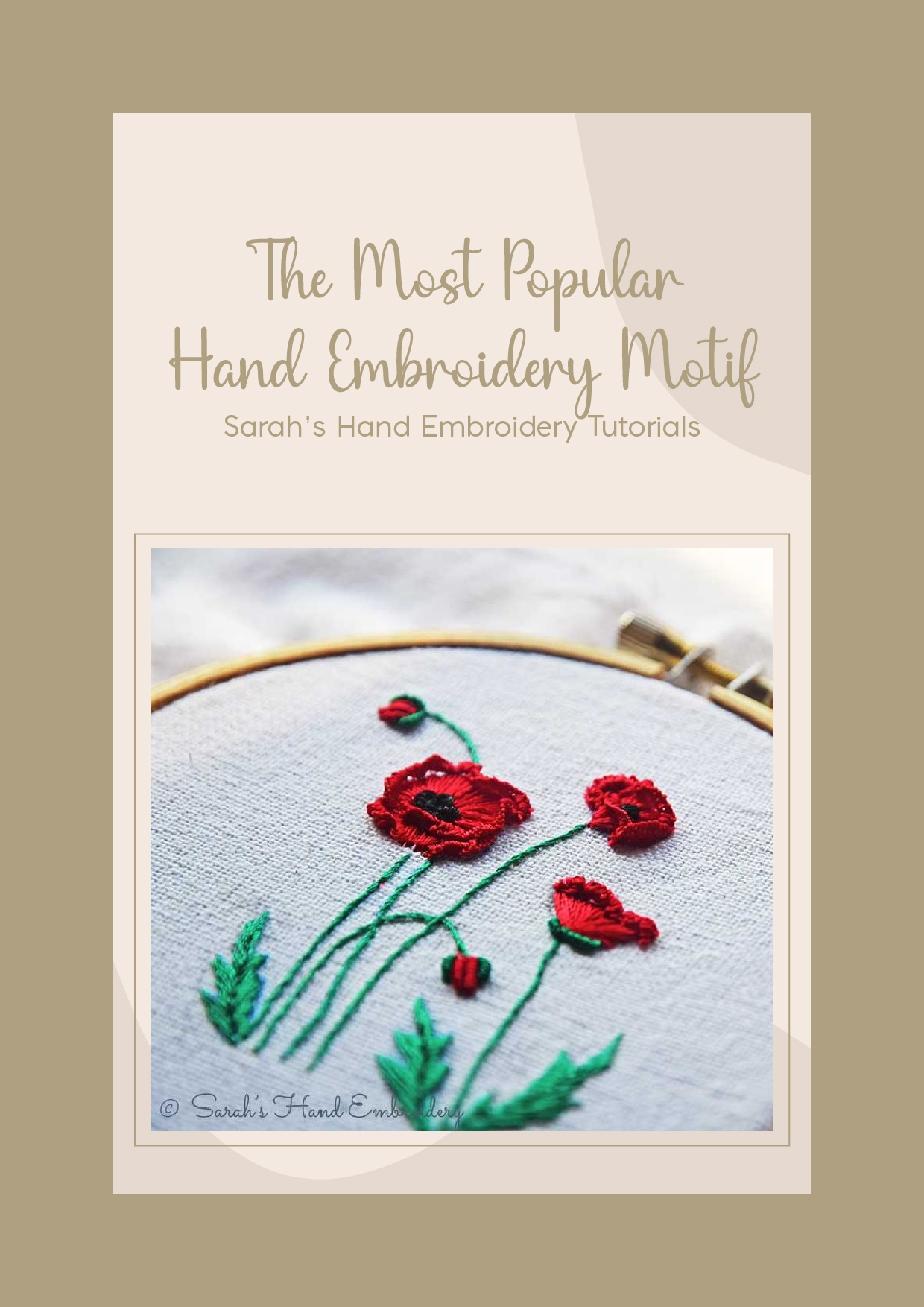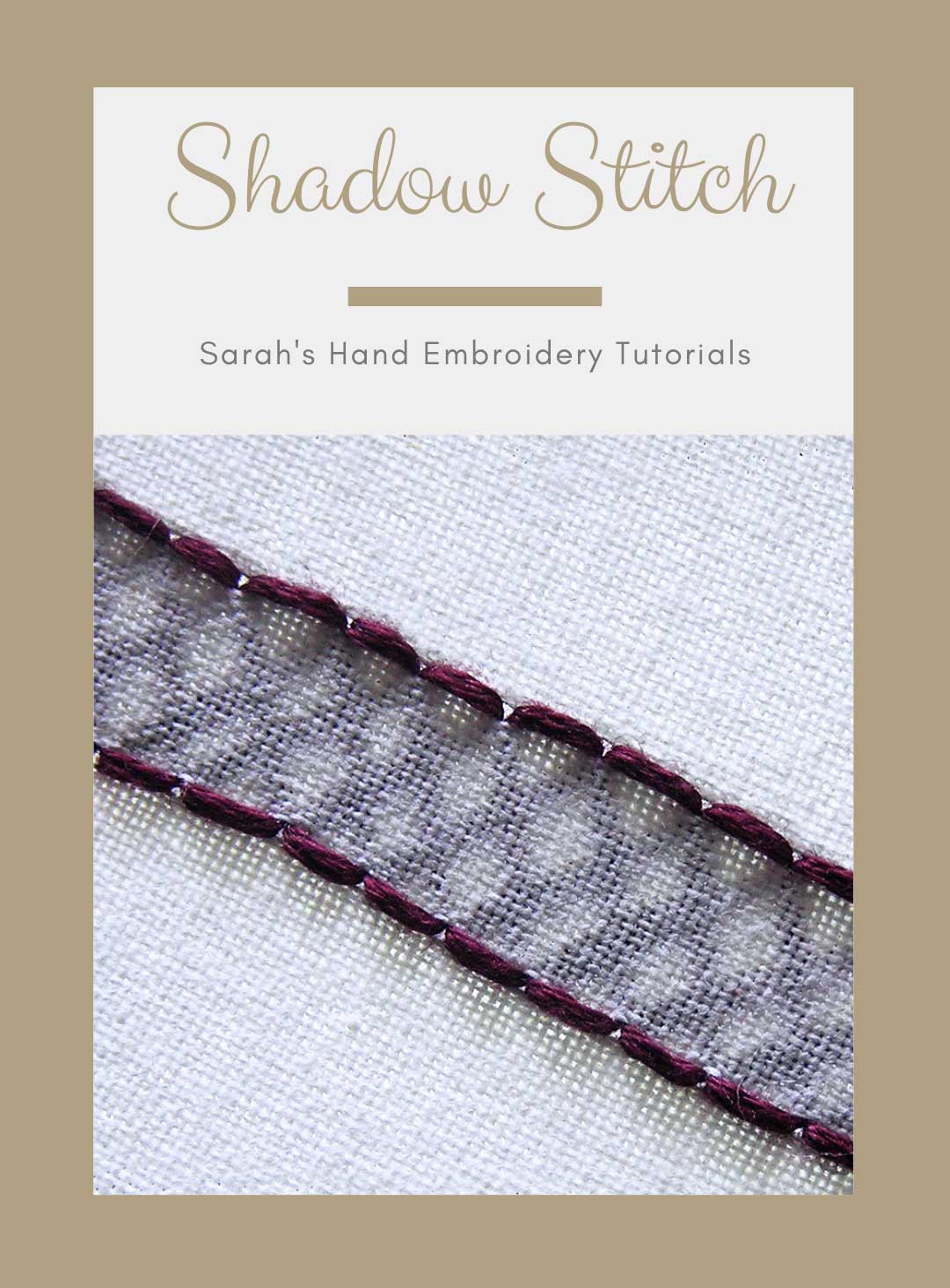This lesson will demonstrate how to do the embroidery using the different stitches over a border design.
It is advised to go through the thread-fabric-and-stitch section of the chicken scratch page before beginning this lesson. It will help you to understand the logic and techniques used in this embroidery.
The stitches used are mentioned with each illustration. Clicking over them will take you to the instruction page of that stitch.
 |
 |
This is a border design. I want it to have a very lacy effect, and so, will use two strands of thinner perle cotton thread. The key will help me to decode the stitches onthe graph and use them on the gingham cloth. Each cell in the graph is like each cell on the cloth.
 |
Cross stitch: It is always better to begin any design with the outer stitches or outlines. So, I begin the border design by doing the cross stitch. I will be doing the cross stitch over the darkest cell. |
 |
Double cross stitch: I begin filling up the inner part of the border with the double cross stitch. The filling is done only over the darkest cell. |
 |
Woven circle: The legs of the cross stitch provides good anchors to make a woven circle. I make two rounds of circle, each time. This gives a bolder, more embossed look. |
 |
Woven oval: I weave ovals with the diagonal stitches of the double cross stitch as the anchors I make the ovals only in the white cells. |
 |
The finished border looks like this. It gives a very lacy and rich effect when viewed from afar. 🙂
Note how all the tinted cells are left alone. Working the cross and double-cross stitches over the darkest cells nullifies the color in the design part of the fabric. Woven ovals and woven circles over the white cells, amplifies the ‘whiteness’ and gives it a more raised, lacey look. The tinted cells will throw out a background effect.
Other Lessons:
 Sarah has been researching and sharing hand embroidery lessons for over 17 years, making it accessible to everyone around the globe.
Sarah has been researching and sharing hand embroidery lessons for over 17 years, making it accessible to everyone around the globe.





Thank you for sharing this. I had had this on my list of things to do for sometime and when I saw this pattern I knew it was the one! It really does look like a lace panel. I am planning to turn this into a little make up bag.

Wow! This looks so beautiful, Carol!! Thank you so much for sharing your work. 😍😍
Not sure if photo of finished article will load, but thank you again 🥰
Carol, this is such a beautiful pouch!! Love it!! Can I share this photo in my Facebook page?
Hi Sarah, yes that’s absolutely fine. I’m glad you like it ☺️
I was taught this technique when in elementary school. I still have the apron I stitched by hand and, of course, did the cross stitch.
In fact, in 1995, I wore the apron onstage when in a play in NYC.
It’s fun to see the stitches my little hands did as a child.
I hope the photo shows up!
Wow, Marny! Thank you so much for sharing this picture. I am sure the apron is a treasure for you. Not many things last like hand embroidery. Beautiful! ❤️
I did this stitch serval years ago but I have forgot how to do it I am looking for a beginners book to learn the stitch again thank you
Awesome! 🙂
Hi Sarah, nice to meet you. I am Nur from Indonesia. Tq for your beautiful embroideries. I love Your free patttern embroidery. tq so much.
Thanks, Nurhayati! ❤️ You are welcome yo upload your embroidery samples here. ☺️
Can u say me what brand thread are u using
I always use Anchor brand embroidery threads. ☺️
Lovely. I cannot get away from your page.
That’s nice to know, Marina! 🙂
My grandmother and I always use the strings that so the bags of chicken feed shut as our embroidery thread. This was a form wife’s way of being thrifty each piece of string is chains stitched to the feed bag and were saved in a ball by healthwise so whenever they needed a piece of string or selling thread they did not have to go to the store and buy it.
Very well explained,Thanks for sharing.God Bless You.
File: IMG_20141128_221657.jpg
Hi, I have done cross stitch embroidery bed sheet pls see the design….and I like Ur art work keep it up dear….and all d best…
Hello Sarah,
Your blog is read by many people and is shared often on Twitter. It would be marvelous if you could have a Twitter presence yourself, and share your blog posts more frequently on that forum. I was looking forward to adding you to my ‘needlework’ list on Twitter, and I’m sure there are others who would like to benefit from your posts, as well.
Regards,
Jaiwantika D.Dhupkar
Hi Jaiwantika,
Thank you for suggesting Twitter to me. I had been laying low on social media until a year ago. I now have a twitter handle @sarahembroidery. 🙂
-Sarah
Hi Sarah,
I learnt Kasuti sometime back. Now that I have more time and would like to take up orders, can you please guide me as to how much should I charge for the work. So far I never charged anything since it was for my close friends.
Thanks
vijaya
This is beautiful and i can’t wait to try it! I was just wondering if you use an embroidery hoop to stablize the area you’re working on or do you just hold your fabric as flat as you can without it?
Hi Cara,
I worked the Chicken Scratch embroideries without an embroidery hoop. I feel it works fine without one. 🙂
Dear Sarah,
Im so amazed with chicken stratch embroidery now after finding out from your blog which I came across accidentally. It is so very lovely. Thank you so much for generously sharing the tutorial which is presented very well. I will definitely embark on this new project. I am very passionate about handwork. Love you..for sharing.
I used to embroider when I was a kid its been like 30 yrs. This might sound silly, I have 6 strand floss, I want to do designs in jean how many strands should I use to be safe.
Hi… it is so beautiful..plz post some more designs of chicken scratch.I shall be thankful to you..
What a site…..meticulous and detailed information..I was never inrtrested in stitching and stuff like this ….but I must say you have inspired me to learn this art…step by step directions will probably help me…keep up the good work….will soon be trying all that you have shown …
This is so pretty! Thanks for all your hard work!
Hi Sarah! How do I subscribe to your site for updates? And e-mails? I’m sure I’m probably just over-looking it, but cannot find where I sign-up. Thank you for your help. I really want to follow your site and learn from you. Thank you, again. Hugs, Dianna
Dear Dianna,
To subscribe to the feeds, you can use this link. https://www.embroidery.rocksea.org/feed/
Hope this helps. 🙂
Felicitaciones por el arte maravilloso que tienes en tus manos! Y gracias por compartirlo! Saludos desde Argentina!
Its very nice sarah. I have learned a lot from ur site. even i have to thank u for allowing for copying the steps for learning the stitches, where none does in their blogs, which will help me even if i forget the steps…. thank uuuuuu.
For synthetic sarees what type thread should i use….?pls reply
Dear Suvarsha,
Thanks. 🙂
The type of thread to use on synthetic saree depends a bit on what kind of synthetic saree it is. Generally, I would suggest to stick to 2 strands of cotton thread or silk threads if the saree is a thin one. If the fabric is thick, then, you can use any thread.
Hi Sarah
i must sincerely commend yo for doing such a good job with this blog, I went through each and every stitch, although I myself don’t do much sewing now, used to when my girls were younger. used to make handbags, purses and baby bags, now got on to cakes and fruit carvings, i do sew my own clothes and add on embellishments to them. that’s how I stumbled into your blog, while searching for Zardozi tutorials, i once got a book from mahila arts with zardozi designs, and treasure it. all the best Sarah! you are such an asset to people out there who want to learn these stuff. keep up the good work!
God Bless!
iam posting algerian eye sampler here..
Hi Leela,
Thanks for sharing your work. It is nice to see a variety of this stitch. 🙂
i tried to upload my chiken scratch work again and again here but not succeeded yet..dont know whats the problem..thank you sarah for the support..
Hi Leela, there is a file size limitation of 5mb. Please check if that is the case. Otherwise, send the file to sarah by email.
Cheers,
Thanks Sunayana for sharing here. It will be an inspiration and example to the other learners. 🙂
Its my pleasure sarah… Its glad to follow ur blog
Thank u sarah…I ve uploaded image of work I tried
Hi sarah, interesting work, I have tried this work; link is here please go through
creative-patterns.blogspot.in/2012/08/trial-chicken-scratch-embroidery
Dear Sunayana,
Thanks for sharing your work. Really nicely done. Please try to upload a picture of your work here too. It will be interesting.
Ohhh very interesting lesson! do existe a lesson 3 and 4 and more?
kisses
Manu
nice work sarah 🙂
are you on facebook??
love your work ..
regards,
sana
Pakistan
Dear Chetana,
It is indeed nice to know that our pages have inspired you back into embroidering. 🙂 Yes, please do share with us what you will be stitching. It will be nice to see.
You have nice website and I am wanting to try out many of the recipes from it. 🙂 I am just recovering from my post delivery condition and will get back to my kitchen slowly.
warm regards.
Hi Sarah,
Just came across ur page while browsing for craft ideas. U have an awesome site and this page inspires me to start embroidery once again after ages. I love how u illustrate every stitch and the tutorial is easy to understand.
I have also come across so many new stitches which I was not aware off, but your tutorial makes it look simple and urging me to try 🙂
Will dfntly dig in for my needle and thread this weekend and will post you what i make out of it.
Till then, thanks for putting up such a fab site.
Cheers.
hi Sarah,
I’ve almost seen all the types of stitches you’ve given a tutorial on but I am really not understanding that which one should apply on a CASEMENT cloth. So I would be really very thankful to you if you tell me which embroidery should i use
Dear Muskan,
Since casement cloth is similar to an aida/matty cloth, the threads is easily countable. So, you can use the stitches you can use over aida fabric. For instance, cross stitch family of stitches, the running stitch, back stitch and many of the chain stitch family of stitches. In embroidery, you can try chicken scratch, kasuti work, cross stitch, pattern darning varities etc…
Hope this helps. 🙂
Hi Sarah,
Thanks a lot for the tutorials. Please tell me whether this stitch can be used in plain cloths.
Dear Lekshmi,
This stitch is traditionally meant to be on gingham/ checkered cloth. You can also try this on aida/ matty cloth.
This kind of embroidery had been developed to make the checkered cloth look more attractive. But, there is no rule that you cannot try this on a plain cloth. 🙂 There is always a scope to experiment.
So, if you are trying it on plain cloth, and if you feel good about the outcome, please share your work with us by uploading a picture of it here. It will be an inspiration to many.:)
Lekshmi G, I would think it would work and especially if you took a marking pencil and drew borders to contain the stitching like the rows in the gingham.
Hi sarah,
This question might sound silly. I’m sorry if you have explained about the threads and needles that can be used for each stitches(for better look). Also, I’m in India Chennai, can you advise any shop which can provide all these threads. As many of the crafts shop have only Anchor thread six strands tread.
Please……..
Nandhini
Dear Nandhini,
I do not know much about the shops in Chennai, so I don’t know how much I can help you with it.
If you can check in any store that sells art and craft items, or even tailoring items, you can at least find some information on where you can find a thread store. Most of these stores usually have anchor threads, silk threads and perle cotton (one which I used here).
Thank u
Nandhini
Yes, you can use embroidery floss with six strands. Just customize it to the gauge or thickness of your cloth. If it is a fine cloth use only two strands, if it is a coarse cloth with the large weave visible, use 4 or more.